a website by photographer Penny Gentieu
Toledo has a very special artistic history, and that is why I created this website about the historic artists of Toledo.
My mother, Audrey Pinkerton Gentieu (1922-2009) painted from age five until her last week of life, at age 86. This website is for her.
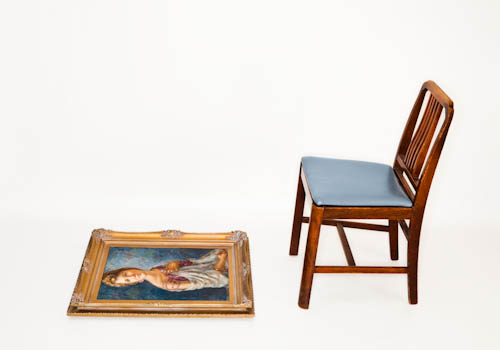
For artistsoftoledo.com’s first logo, I used my mother’s painting and placed it on the floor in front of an empty chair, to show how the Toledo Museum of Art was started by artists in 1901. Thomas Parkhurst (1853-1923) described the beginnings this way: one painting and a “filched” chair used by George W. Stevens to entice donors into giving, one by one, until the necessary amount was met to cover operating expenses for the new museum. 
Karen Glover, daughter of sculptor LeMaxie Glover (1916-1984), holds her father’s terra-cotta portrait of her mother, Mary. While taking this photo in 2010, her mother was resting in hospice care on their closed-in front porch. Busts filled parlor windowsills and a large nude terra cotta reclined on the coffee table. LeMaxie was an award-winning artist who chose to return to Toledo from a professorship at Cranbrook to help his community by teaching art at Scott High School. He was a mentor to many, and left a profound legacy of civic generosity.
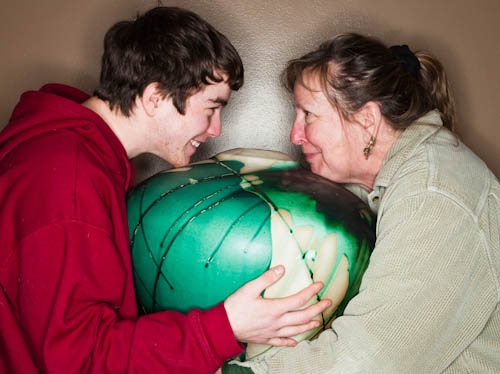
Floy Shaffer’s (1925-1997) large ash-fired pot held by daughter Melissa and grandson Robert, photographed in the house Floy built in Bowling Green, Ohio, with hundreds of her clay works.

Painter and teacher John Botts (1933-2003), photographed in 1979 with a work in progress . Charismatic, philosophical and Jean-Paul Belmondoesque, Botts influenced a generation of art students at the Toledo Museum School of Design. Botts-isms: “The interest in color is always present…where color seems least present, or most lacking in intensity, one finds more color.” “There is only a single reason for painting a painting: because one wishes to paint a painting, no more.”

Bronze sculpture, Woman with Birds, by Joe Ann Cousino (1925-2007), installed at Crosby Gardens. Cousino was a groundbreaker in this region as a woman working in bronze. She was a savvy and tough businesswoman artist. As the first woman president of the Toledo Federation of Art Societies, she introduced fresh ideas for fundraising perfect for her era.
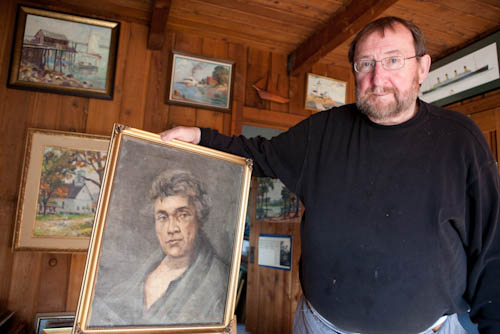
Frank North with a painting by Earl North (1904-1989) of Betty Kappes, widow of painter and teacher Karl Kappes (1961-1943). Kappes, who claims to have painted 10,000 paintings, taught many Toledo artists including my mother.
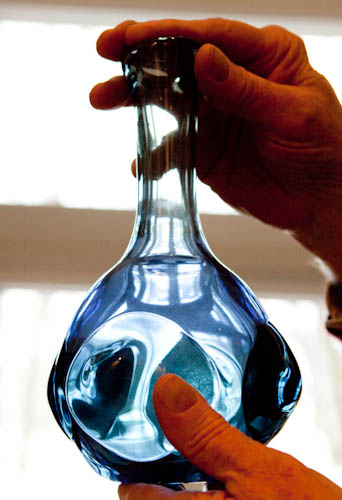
Allen Roudolf (d. 2014), collector, with his blue vase with prunts made by Dominick Labino (1910-1987). Scientist and artist, Labino literally melded industry and art. He was a leader of the Studio Glass movement in 1962, inventing many formulations necessary to the process. Labino glass is uniquely organic in shape and color. Baker O’Brien, his apprentice, is the only person who knows his color formulations. His rise to fame in the 60’s and 70s is legendary. He is in the best museum glass collections in the world.
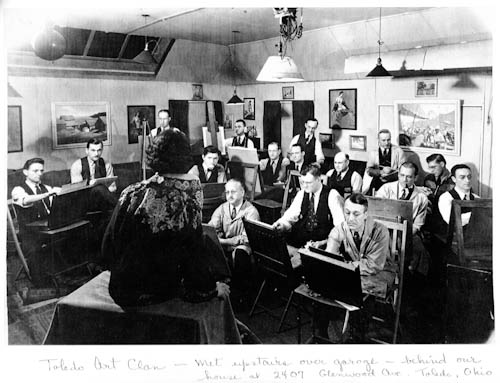
One of the many Toledo art groups in the 1930’s, the Art Clan (no relation to the KKK), painting a model. Several of the early groups were men-only. The Athena Society, formed in 1903, was women-only. This group however, cultivated a diverse membership of men and women of all ethnic backgrounds (although you wouldn’t know it by looking at this photo.)
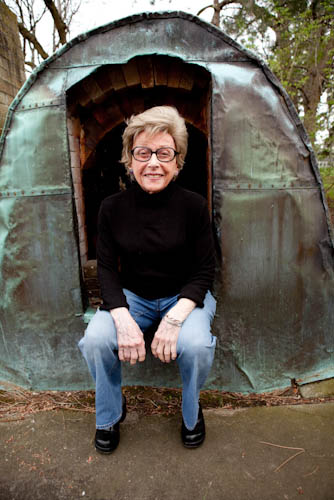
Potter Edith Franklin (1922-2012), at the age of 87 sitting in the doorway of the kiln she built in her Ottawa Hills backyard on the April day in 2010 that she gave a videotaped oral history interview. One of the founders of the Toledo Potters Guild in 1951 and a member of the 1962 studio glass movement, she received her college degree at the age of 65, then took her first teaching job creating the clay program at 577 Foundation. Edith attributed her success to working hard and always being curious and experimental, but just as importantly, she said, it was luck. She had a show at the Toledo Museum of Art at age of 36.
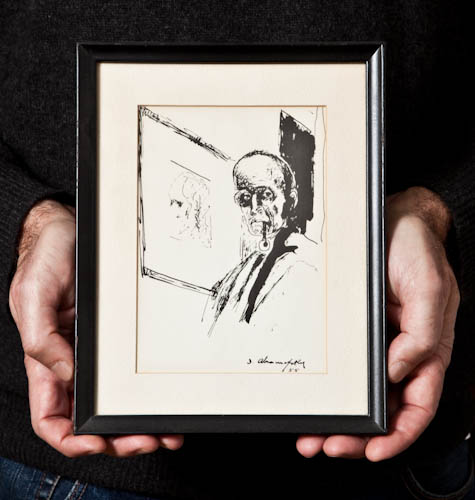
Collector Michael Isenberg holds self-portrait by Israel Abramofsky (1888-1975), beloved artist and teacher. His life is described in a collection of hundreds of newspaper clippings spanning 70 years. He studied in France and lost his family in the Holocaust. He was a kind and humble man. Abramofsky left 3,000 works to the Temple Shomer Emunim and a scholarship fund to help art students, as he was once helped as a young man. He rewards a young artist every year in the Toledo Area Artists Exhibit, the Israel Abramofsky Award of the Temple-Congregation Shomer Emunim.
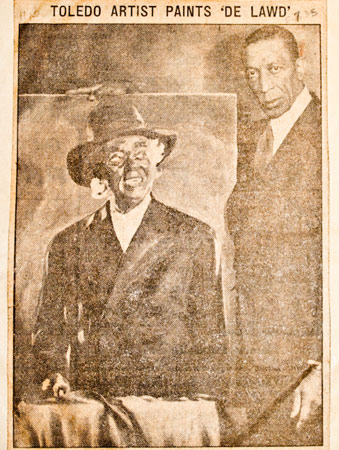
1935 clipping lends clues to the life of painter, Frederick Douglass Allen, born in 1886. He was an early student of the Museum School. He was also in eight of Toledo’s Annual Exhibition of Toledo Artists, (Toledo Area Artists Exhibition) including the first Annual Toledo Area Artists Exhibition in 1918. Later in his life he moved to Washington, D.C. and worked for the government printing office as a lithographer.
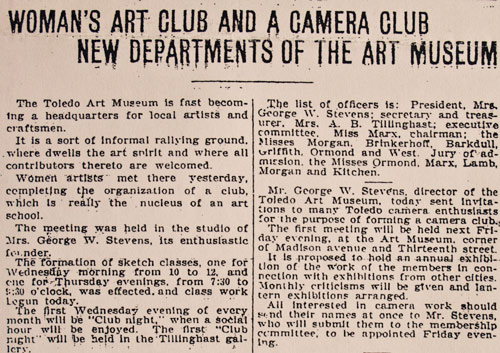
1903 clipping describes groups and departments forming at the Toledo Museum of Art. Immediately after George and Nina Stevens accepted the directorship of the 2-year old museum, their vision for a museum that “took art away from exclusive capitalism and gave it to the people” began to take shape, including progressive plans for community groups and art classes.
